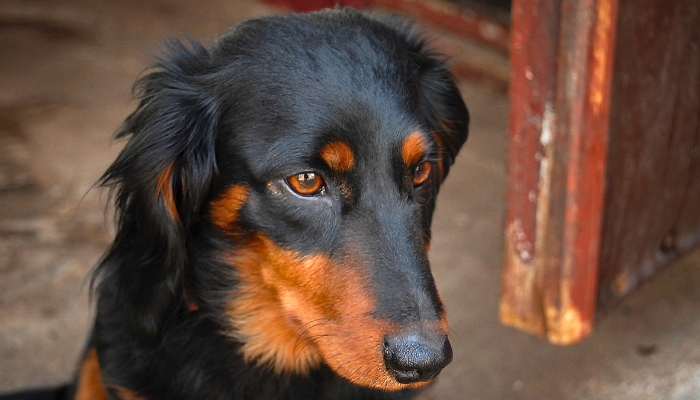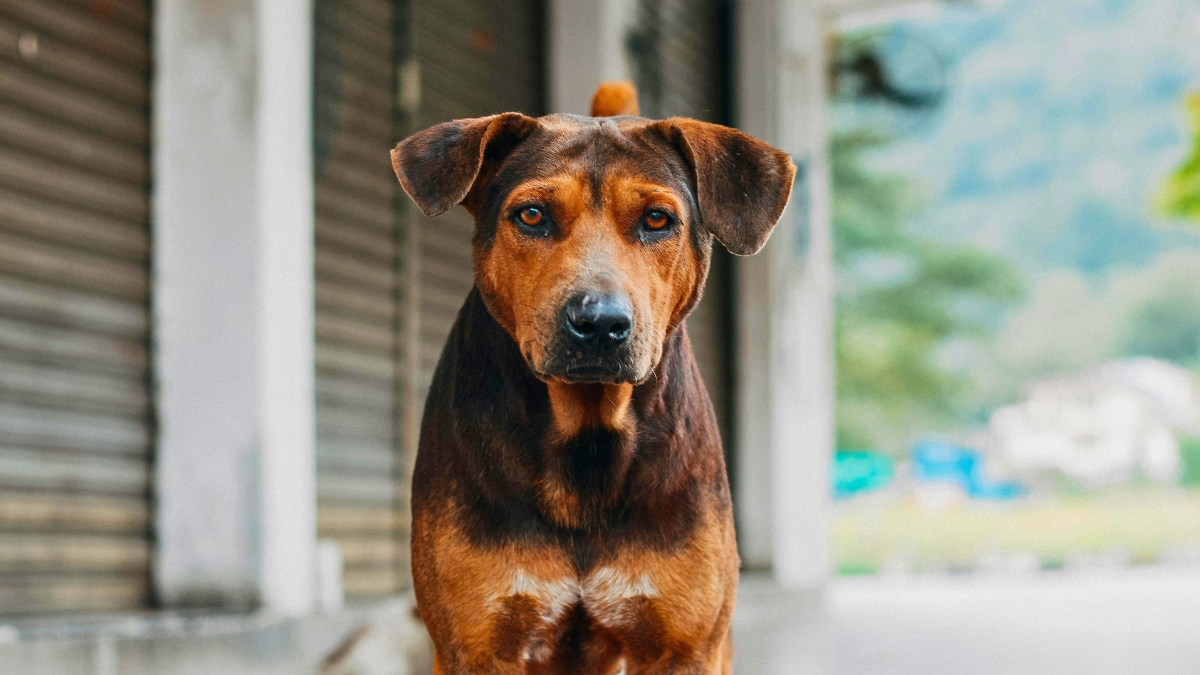Did you know your dog might be upset with you without you even realizing it?
Even though dogs don’t act out of revenge, they can still feel stressed or frustrated, and sometimes, they might associate those feelings with you.
Here are 10 key signs that your dog might be upset with you.
Recognizing these signs is the first step to addressing the issue and strengthening your bond with your furry friend, so pay close attention!
1. Avoidance Behavior
If your dog walks away or leaves the room every time you approach, they’re probably trying to tell you they need a little space.
Just like us, dogs sometimes crave peace and quiet, and one way they communicate that is by avoiding you.
This isn’t about being vengeful—it’s more likely that they’re feeling overwhelmed or annoyed and prefer to keep their distance until they feel better.
When this happens, don’t make the mistake of trying to force interaction. It’s important to give them the time they need to calm down.
Avoidance doesn’t always mean your dog is upset. If your dog consistently avoids you, consider a vet visit to rule out any health problems.
2. Rejecting Treats
Dogs love treats, so if your dog ignores the goodies you offer, it’s a clear sign something might be wrong.
When a dog feels uneasy around someone, it’s not uncommon for them to reject food from that person.
Refusing a treat can be their way of saying they’re uncomfortable or that they don’t trust you at that moment.
Notice what else they do besides ignoring the treat.
If they move away or seem tense, it’s a good indicator they’re not feeling their best.
In these situations, it’s important to give your dog some space and time to regain their confidence.
Take a moment to reflect—did you do something that might have upset them? Identifying the cause can help you avoid repeating it in the future.
3. Avoiding Eye Contact
Typically, when a dog feels happy and secure, they’ll seek eye contact with you.
Direct eye contact is a powerful way to strengthen the emotional bond between you and your dog.
So, if your dog consistently turns their head or looks away whenever you try to make eye contact, it might mean they’re uncomfortable or trying to avoid conflict.
Dogs use this behavior to keep the peace and let you know something’s bothering them without resorting to aggression.
If this sounds familiar, focus on improving your relationship with your dog. Speak to them in a calm, soothing tone to reassure them.
4. Excessive Lip Licking
Dogs have a range of calming signals they use to manage stress, and licking their lips is one of them.
If your dog repeatedly licks their lips or nose, especially when there’s no food involved, it’s a strong sign they’re feeling uncomfortable or stressed.
If your dog shows this behavior as you approach, it likely means they’re trying to cope with stress.
Take a step back and think—could you be the source of their discomfort? What might be causing it?
This behavior is especially common around young kids or unfamiliar people who are too direct or overwhelming.
5. Yawning
Yawning is another subtle signal, similar to lip licking.
If you approach your dog to play or interact, and they yawn, they might be trying to calm themselves down.
Sometimes, a yawn can indicate excitement, like before a walk or mealtime.
But don’t overlook the fact that it could also mean your presence is causing them stress.
To really understand your dog’s yawn, take note of their overall body language. Are their ears perked up or pinned back? If they seem nervous, your interaction might be making them anxious.
Paying attention to these subtle cues will give you a better sense of your dog’s emotional state, helping you adjust how you interact with them.
If you’re interested in learning more about these subtle calming signals, I highly recommend reading “On Talking Terms with Dogs: Calming Signals” by Turid Rugaas.
6. They Don’t Want You to Touch Them
Dogs are naturally social animals, and most of them enjoy physical contact.
For them, it’s a fundamental way to show and receive affection.
In fact, studies have shown that dogs tend to prefer owners who pet them over those who only use verbal praise.
So, if your dog suddenly starts avoiding your touch, it’s worth analyzing the situation to figure out why.
A dog that refuses physical contact might be upset, but it could also be hiding an illness or injury.
Watch for other changes in behavior, like a lack of energy or appetite, which could point to something more serious.
If that’s the case, it’s best to visit the vet for a check-up.
7. They Can’t Relax
A happy, secure dog will relax completely in your presence.
They’ll sleep deeply and might even expose their belly, which is a sign of ultimate trust.
But if your dog is always alert and never seems to fully relax when you’re around, that’s a sign something might be making them anxious or fearful.
Anxiety, fear, or discomfort could all be at the root of this behavior.
Pay attention to other signals, like them constantly scanning their surroundings or startling easily at normal household noises.
8. They’re Friendlier with Others
This is a sign you should never ignore.
If your dog seems more affectionate with other family members while regularly ignoring you, it’s a clear indicator something in your relationship needs attention.
Your dog’s preference for others might reflect a lack of comfort or trust when they’re around you.
Take a closer look at their behavior: Does your dog stiffen up or lower their tail only when you approach?
Instead of taking it personally, see it as an opportunity to improve your bond.
9. They Growl at You
Growling doesn’t always mean something bad.
It can indicate many things—some positive and others not-so-great. Knowing how to interpret growling is key.
If your dog growls when you try to pet them, it’s a clear signal that something is bothering them.
Most of the time, growling means they’re uncomfortable, so it’s essential to pay attention to their body language.
If growling is something new for your dog, don’t hesitate to visit the vet to rule out any health issues.
10. They Act Aggressively
This is a sign you need to take seriously.
When dogs feel truly threatened or upset, they might resort to aggressive behavior.
This reaction happens when a dog feels overly pressured or scared.
Growling is typically a dog’s first warning that they’re uncomfortable and want you to stop. But not all dogs will growl first—they might skip straight to other signs like tense posture or licking their lips.
Constantly bothering a dog, especially after they’ve shown signs of discomfort, can escalate to aggression.
It’s crucial to avoid reaching this point.
If you notice early signs of discomfort, work on addressing the issue before it gets worse.
This will help prevent aggressive behavior and create a happier, more peaceful environment for both you and your dog.

How to Rebuild Trust with Your Dog
Now that we’ve covered the signs that your dog might be upset with you, let’s talk about how to regain their trust.
Dogs are incredibly forgiving, and with a little effort, you can rebuild your bond.
Start by giving them space. Just like us, dogs value their personal space, especially when they’re feeling stressed.
Don’t push them to interact. Instead, let them come to you when they’re ready. This helps them feel like they can trust you again.
Next, create positive associations. Play their favorite games, take them on relaxed walks, or reward them with treats.
These moments will not only make your dog happier but also strengthen their positive feelings toward you.
Keeping a consistent routine is also essential. Dogs thrive on predictability, so feed, walk, and play with them at the same times every day.
Most importantly, be patient. With time and effort, your dog will learn to trust you again.
Understanding your dog’s emotions is key to building a strong and trusting relationship.
If you notice any of these signs, don’t take it personally—dogs communicate in their own way, and their behavior often reflects stress, discomfort, or uncertainty rather than anger.
The best approach is patience, respect, and positive reinforcement.
By giving them space when needed and reinforcing good experiences, you can help your dog feel safe and loved.
With time and consistency, your bond will grow stronger, ensuring a happy and secure companionship.
Bibliography:
